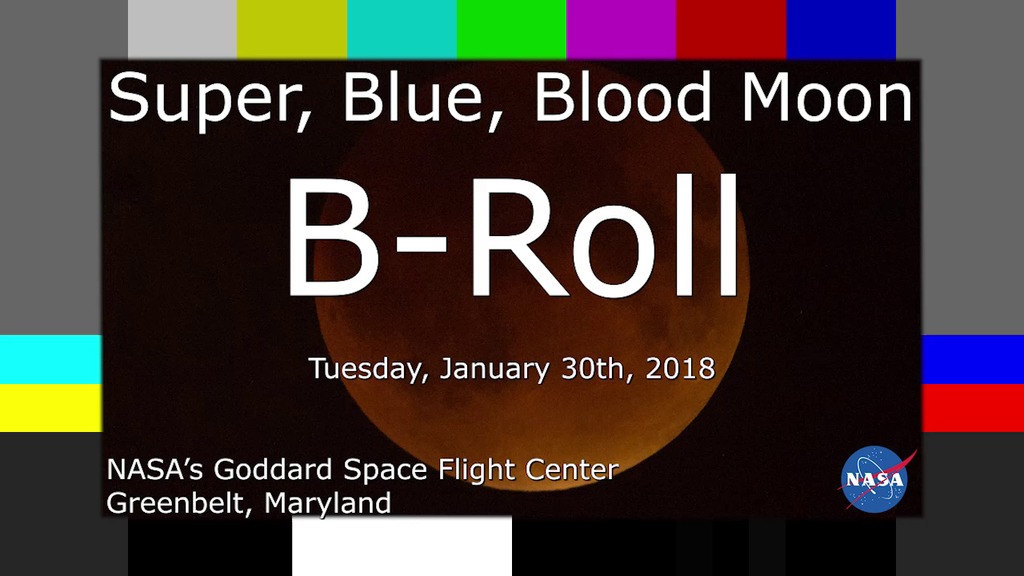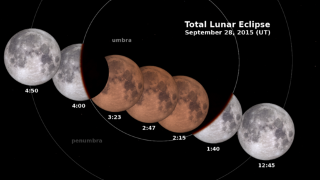Total Lunar Eclipse

The next total lunar eclipse is on September 27, 2015. See what time to look up at the night sky.
On the night of September 27, 2015, the moon will enter Earth’s shadow, creating a total lunar eclipse. During a total lunar eclipse, the moon's surface is illuminated by filtered sunlight passing through Earth’s atmosphere. This results in the moon turning a ghostly copper color. The effect lasts as long as the moon is within Earth’s central shadow called the umbra. On this particular occasion the effect will last for over an hour. All of South America and most of North and Central America will be able to see the entire eclipse, while those farther out west will see it in progress at moonrise. The event is the last of four visible eclipses in the Western Hemisphere in a span of 18 months. The next total lunar eclipse will take place in January 2018. Watch the video to see the changing appearance of the moon as it travels into and out of Earth’s shadow during the event.
The moon passes through Earth's extended shadow, the penumbra, and central shadow, the umbra, in this preview of the Sept. 27 total lunar eclipse.

Diagram showing the moon at various stages of the eclipse with times in Eastern Daylight Time (EDT).

Diagram showing the moon at various stages of the eclipse with times in Central Daylight Time (CDT).

Diagram showing the moon at various stages of the eclipse with times in Mountain Daylight Time (MDT).

Diagram showing the moon at various stages of the eclipse with times in Pacific Daylight Time (PDT).
Credits
Please give credit for this item to:
NASA's Scientific Visualization Studio
-
Animator
- Ernie Wright (USRA)
-
Producers
- David Ladd (USRA)
- Michelle Handleman (USRA)
-
Scientists
- John Keller (NASA/GSFC)
- Noah Petro (NASA/GSFC)
-
Writer
- Ernie Wright (USRA)
Release date
This page was originally published on Tuesday, September 15, 2015.
This page was last updated on Wednesday, May 3, 2023 at 1:49 PM EDT.

